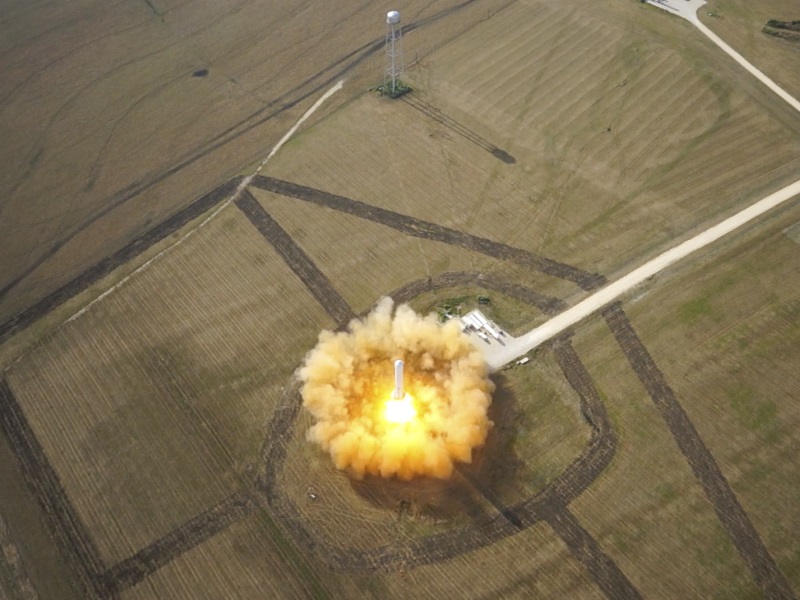- Home
- Science
- Science Features
- What It Would Take to Fly Spaceships to the Stars
What It Would Take to Fly Spaceships to the Stars

Anyone, after all, can talk about going to the stars. But they're really far away. The distance to the nearest star system, Alpha Centauri, is 4.4 light years. That's something like 26 trillion miles. To put it in perspective, it took the New Horizons spacecraft nine years to reach Pluto. A craft going the same speed would reach Alpha Centauri around 11000 AD. Zuckerberg and Milner propose completing that 9,000-year trip in 20 years.
The plan is to accelerate a fleet of miniature spacecraft to a quarter the speed of light by propelling them across space with a laser beam aimed from earth. The concept of "laser sailing" goes back to a 1984 paper by the physicist and science fiction writer Robert Forward, who had been discussing the concept since the 1960s.
Is it possible? Maybe, say space scientists and aerospace engineers. It can't be done without technological advances, but it's not a crackpot idea.
"There are some challenges, to say the least," said Ralph McNutt, a space scientist at the Johns Hopkins Applied Physics Laboratory and a veteran of the voyage to Pluto. For one thing, he said, it will take lasers more powerful than any ever built. According to the New York Times, it will take an energy output equivalent to 100 nuclear power plants to propel even an iPhone-sized craft to a fifth the speed of light.
That's about 130 million mph, and that kind of extreme speed creates all sorts of challenges. For example, someone will have to invent new materials that can stand the heat. "With the kind of power levels you'd need, you'd end up not pushing your spacecraft but vaporizing it," McNutt said.
There's no set of brakes that would stop the craft on arrival for a little touring around. With laser sailing, the craft would just zip by Alpha Centauri, snap a quick picture or two and be gone. There would have to be some kind of antenna powerful enough to beam the pictures back to earth, or no billionaire would get bragging rights.
Still, McNutt says he's excited by the plan. "I grew up during the Mercury flights and was really gung ho with all this stuff," he said. "I can remember there was an article Isaac Asimov published in the World Book Encyclopedia in 1965, about how far we could go in space. He had concluded that the next star system was so far that maybe we would never be able to do it."
Another fan of big exploratory ambition is Thomas Zurbuchen, a professor of space science and aerospace engineering at the University of Michigan. He also mentioned some practical difficulties.
For example, nobody knows how to focus a laser so precisely that it would stay perfectly trained on an iPhone-sized spacecraft as it hurtled away.
Then there's the problem that space isn't perfectly void. There are hydrogen atoms out there - about one per cubic centimeter. "These particles seem very calm and quiet but once you start plowing through them at a quarter the speed of light, they turn into a death ray," Zurbuchen said.
There are also dust grains. "Those will come at you like bullets," he said. He calculated how the dust would affect a craft going a fifth the speed of light and concluded that by the time it got to Alpha Centauri it would look like Swiss cheese. "It will require tremendous innovation to deal with this situation," he said, starting with practice missions using laser propulsion to send objects to closer destinations.
If a craft ever got to Alpha Centauri, it could send some incredible picture postcards back. It's not one star but a system of three, with at least one earth-sized planet and possibly more. Astronomers have urged Nasa to fund such a mission, but the decades-long timescale and colossal price tag one back-of-the-envelope estimate put the cost of the laser alone at $10 trillion might make it hard to sell to taxpayers.
That makes it a good candidate for private funding. The billionaires have only promised $100 million so far - a sliver of the likely total cost. But it's enough to start some research into the technology, perhaps leading to practice runs sending tiny cameras zipping around our own solar system's planets and moons. Think of it as one baby step for mankind.
© 2016 Bloomberg L.P.
Get your daily dose of tech news, reviews, and insights, in under 80 characters on Gadgets 360 Turbo. Connect with fellow tech lovers on our Forum. Follow us on X, Facebook, WhatsApp, Threads and Google News for instant updates. Catch all the action on our YouTube channel.
Related Stories
- Samsung Galaxy Unpacked 2025
- ChatGPT
- Redmi Note 14 Pro+
- iPhone 16
- Apple Vision Pro
- Oneplus 12
- OnePlus Nord CE 3 Lite 5G
- iPhone 13
- Xiaomi 14 Pro
- Oppo Find N3
- Tecno Spark Go (2023)
- Realme V30
- Best Phones Under 25000
- Samsung Galaxy S24 Series
- Cryptocurrency
- iQoo 12
- Samsung Galaxy S24 Ultra
- Giottus
- Samsung Galaxy Z Flip 5
- Apple 'Scary Fast'
- Housefull 5
- GoPro Hero 12 Black Review
- Invincible Season 2
- JioGlass
- HD Ready TV
- Laptop Under 50000
- Smartwatch Under 10000
- Latest Mobile Phones
- Compare Phones
- Realme P4x 5G
- OnePlus Ace 6T
- Nubia Flip 3
- Nubia Fold
- OPPO A6x 5G
- Samsung Galaxy Z TriFold
- Poco F8 Ultra
- Poco F8 Pro
- Asus ProArt P16
- MacBook Pro 14-inch (M5, 2025)
- Poco Pad M1
- Poco Pad X1
- Just Corseca Skywatch Pro
- Honor Watch X5
- Acerpure Nitro Z Series 100-inch QLED TV
- Samsung 43 Inch LED Ultra HD (4K) Smart TV (UA43UE81AFULXL)
- Asus ROG Ally
- Nintendo Switch Lite
- Haier 1.6 Ton 5 Star Inverter Split AC (HSU19G-MZAID5BN-INV)
- Haier 1.6 Ton 5 Star Inverter Split AC (HSU19G-MZAIM5BN-INV)
















